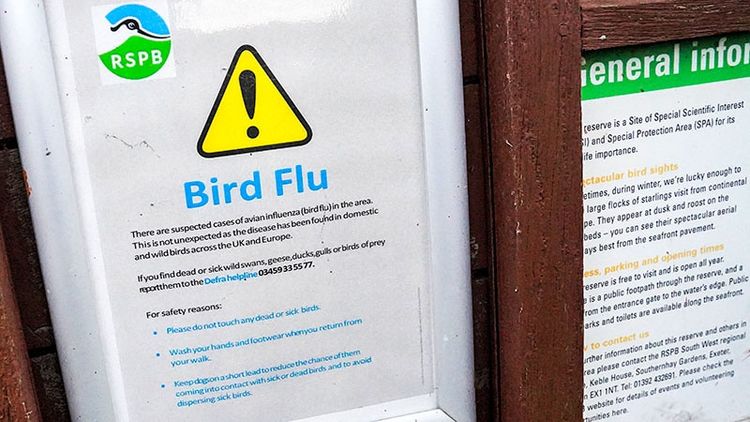European Scientists Assess Avian Flu Pandemic Risk

As avian influenza continues to spread among wild bird populations in the European Union (EU), scientists have described a wide range of factors that could drive the virus to spread efficiently among humans, thereby increasing its pandemic potential.
Although transmission of avian influenza A(H5N1) from infected birds to humans is rare,
"new strains carrying potential mutations for mammalian adaptation" could occur, according to a report issued on Wednesday by the European Centre for Disease Prevention and Control and the European Food Safety Authority. The analysis identified a threat of strains currently circulating outside Europe that could enter the EU and the wider European Economic Area (EEA).
"If avian A(H5N1) influenza viruses acquire the ability to spread efficiently among humans, large-scale transmission could occur due to the lack of immune defenses against H5 viruses in humans," the report warned.
Evolution of Avian Influenza Remains Hard to PredictHowever, despite many occurrences of human exposure to avian influenza since 2020, "no symptomatic or productive infection in a human has been identified in the EU/EEA," the scientists stated. Furthermore, after almost three decades of human exposure to the A(H5N1) virus of the Gs/GD lineage, the virus has not yet acquired the mutations required for airborne transmissibility between humans. However, it remains "difficult to predict the evolutionary direction the virus will take in the future," the scientists assessed.
"Clearly, humans are being exposed in the current USA cattle outbreak," Professor James Wood, infectious disease epidemiologist at the University of Cambridge, United Kingdom, told Medscape Medical News. "But, arguably, what is more significant is how few cases there have been with this virus lineage and its close relatives, despite massive global exposures over the last 3 years. All diagnosed human cases seem to have been singletons, with no evidence of human-to-human transmission."
Ian Jones, professor of virology at the University of Reading, United Kingdom, sees no evidence of an imminent spillover of avian influenza from birds. But he told Medscape Medical News: "The trouble is, the clock resets every minute. Every time the virus has come out of a bird and gone somewhere, the clock is reset. So you can never say that just because it hasn't happened since whenever, it's never going to happen."
Preventive Measures RecommendedThe European report recommended a range of cautionary measures that included enhanced surveillance, access to rapid diagnostics, and sharing of genetic sequence data. It urged EU authorities to work together, adopting a One Health perspective, to limit the exposure of mammals, including humans, to avian influenza viruses.
Dr Sarah Pitt, a microbiologist at the University of Brighton, United Kingdom, said the emphasis on authorities taking a One Health approach was sound. "You're looking at humans, animals, plants, and the environment and how they're all closely interacted," she told Medscape Medical News. "Putting all those things together is actually going to be good for human health. So they've mentioned One Health a lot and I'm sure that's on purpose because it's the latest buzzword, and presumably it's a way of getting governments to take it seriously."
Overall, Pitt believes the document is designed to move zoonotic infectious diseases a bit higher up the agenda. "They should have been higher up the agenda before COVID," she said.
The report also called for consideration of preventative measures, such as vaccination of poultry flocks.
Overall, Jones assesses the European report as "a reworking of what's been pretty well covered over the years." Despite extensive work by scientists in the field, he said: "I'm not sure we're any better at predicting an emerging virus than we've ever been. I would point out that we didn't spot SARS-CoV-2 coming, even though we had SARS-CoV-1 a few years earlier. Nobody spotted the 2009 pandemic from influenza, even though there was a lot of surveillance around at the time."

















































